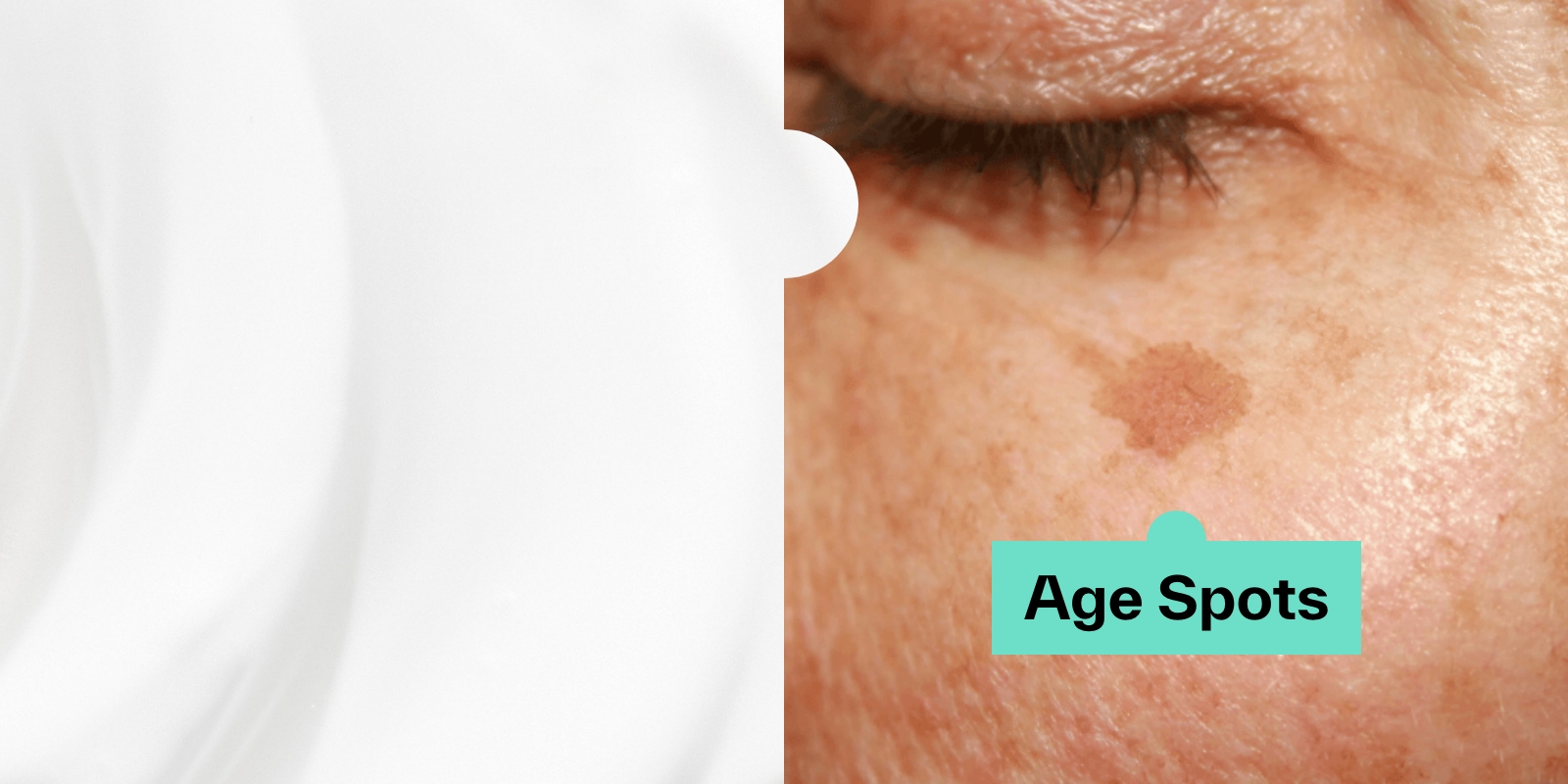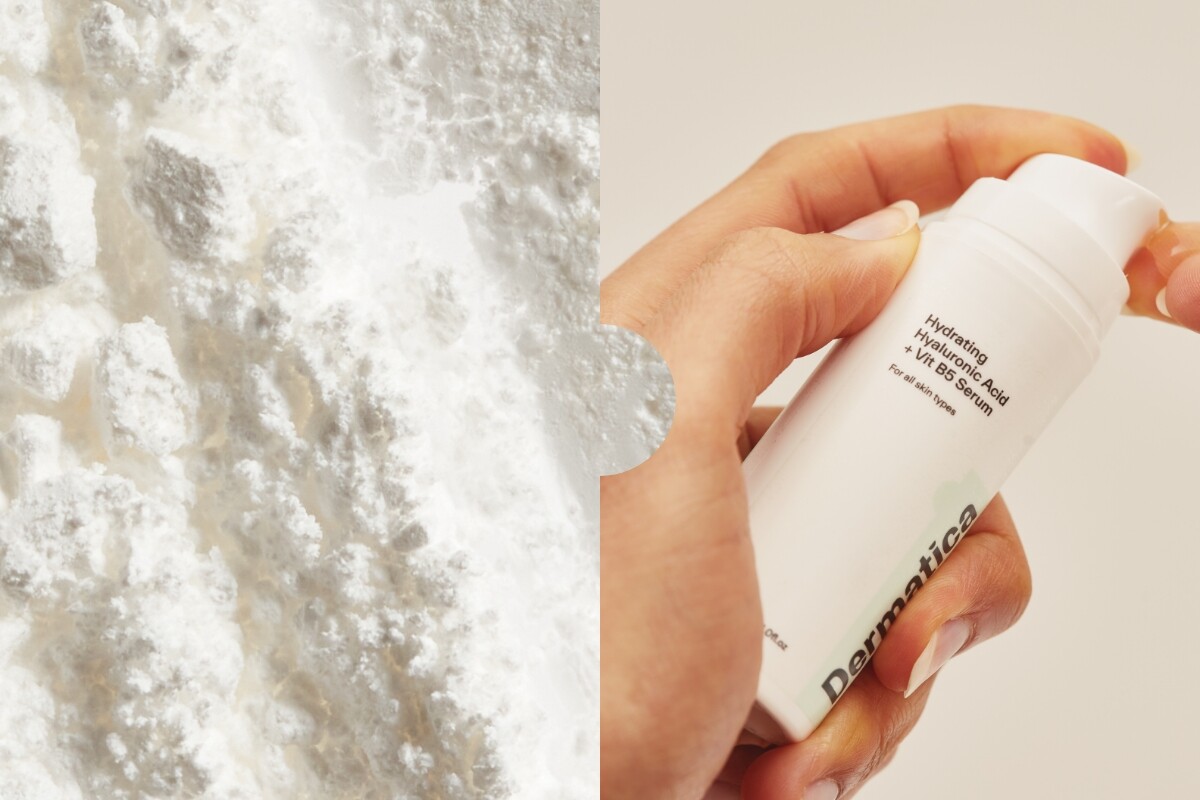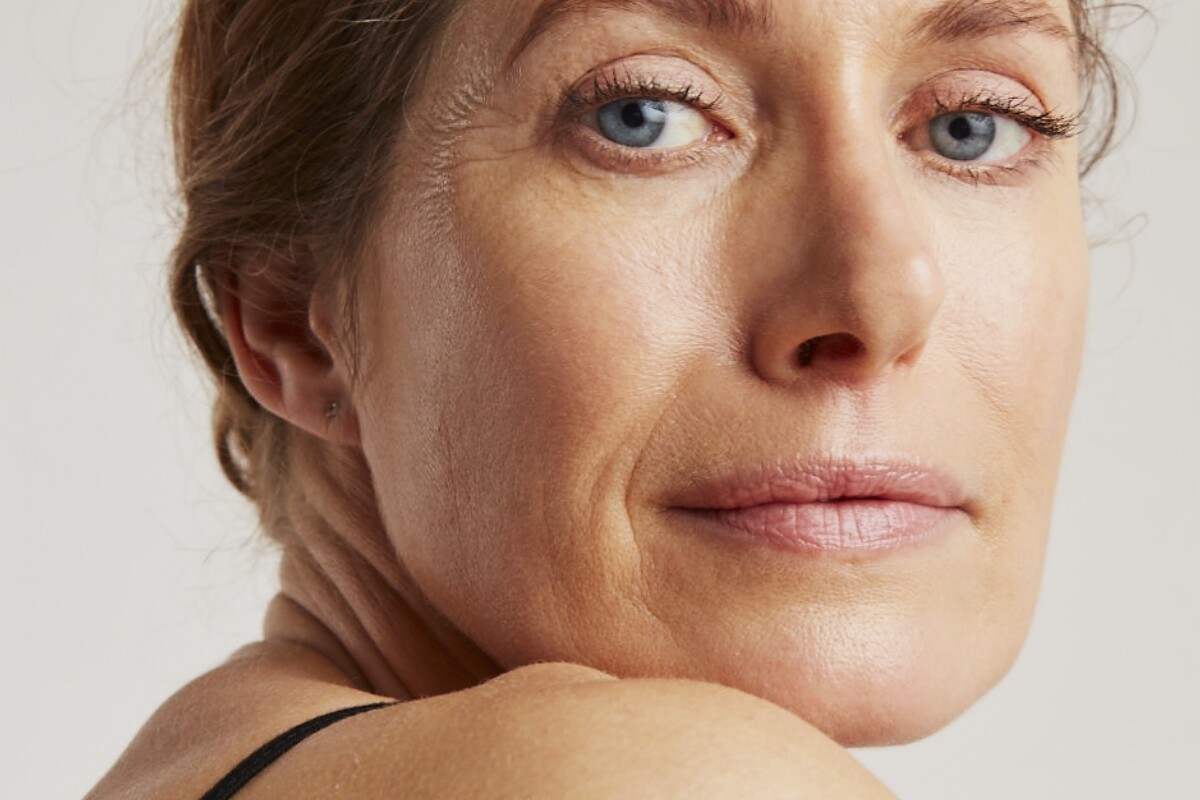Age spots, also known as dark spots, sun spots or hyperpigmentation, are one of the most common skin conditions. But if you’re a fan of natural remedies or organic skincare, you may be wondering: Can you remove age spots naturally?
At Dermatica, we see this condition all the time – it’s really quite common. These spots appear because of extra pigment in your skin. So for us to better explain how to fade them, we’ll briefly explain how this extra pigment forms, before exploring the research behind the common ingredients our experts often see in natural remedies.
What Are Age Spots?
Age spots are a form of hyperpigmentation, which is a condition where your skin cells produce extra pigment (known as melanin). They’re also often called dark spots, sun spots or liver spots.
This extra pigment can form small, flat spots that range in colour from light tan on fair skin, to dark brown or black on darker skin tones. They’re harmless, and aren’t a sign of skin cancer. How dark they look will also depend on your skin tone and how intense your dark spots are. (1)
How Do Age Spots Form?
Our skin produces a pigment called melanin. It’s made by cells that live right at the bottom of your epidermis (the top layer of your skin) called melanocytes. When they’re working normally, an enzyme called tyrosinase works within these melanocytes to produce the melanin that gives you your skin tone. (2)
Hyperpigmentation is triggered when tyrosinase and melanocytes are overstimulated by something. This could be hormones from pregnancy or birth control (often seen in melasma), inflammation (like after irritation or acne spots have healed), or sun damage from UV rays which can lead to age spots. (3)
How To Prevent Age Spots
If you want to fade age spots, our dermatology experts recommend limiting this overproduction of melanin as much as possible. Otherwise any treatment or cream for sun damaged skin you use will be like trying to towel off at the beach while you’re still in the sea. It just won’t work as well.
The most effective way to prevent age spots is proper sun protection. Sun damage from excessive sun exposure is the main external (non-genetic) cause of age spots for most people. And a lot of pigmentation treatments, natural or not, can make your skin more sensitive to the sun. Before you try any treatment, make sure you’re practising a good sunscreen routine every day. (4)
Do Natural Sunscreens Work?
There are two types of sunscreen that give your skin broad-spectrum protection from UVA and UVB rays – mineral sunscreens and chemical sunscreens.
Out of the two types, mineral sunscreens are considered to be more “natural.” The sunscreen filters are made from minerals such as zinc oxide or titanium dioxide and they do work effectively at blocking both UVA and UVB rays.
The bottom line is, you just need to make sure your sunscreen blocks out both UVB and UVA rays. UVA rays are longer wavelengths that penetrate deeper into your skin, and cause photoageing (early wrinkles and pigmentation).
The language around how protective sunscreens are differs depending on which country you’re in. In the UK, EU and Australia, look for labels that say “broad-spectrum sunscreens.” The EU also refers to this as PPD (Persistent Pigment Darkening).
In Asia, look for an SPF rating as well as the letters ‘PA’ with plus symbols (+). The UK also uses the Boots Star Rating System. For these, you’ll want to look for as many pluses or stars as possible. (5)
Are Natural Sunscreens Better Than Chemical Sunscreens?
Unless you’re allergic to an ingredient in chemical sunscreens, the view that mineral sunscreens are ‘better’ than chemical sunscreens for pigmentation is a myth. In fact, high protection sunscreens like our SPF50 Photodamage Defence Sunscreen always have chemical filters, as these can offer higher protection and are often more effective at preventing the formation of age spots.
That’s not to say that mineral sunscreens aren’t effective if you prefer those. Just make sure they contain zinc oxide, titanium dioxide, or both. They should have an SPF rating of 30 or higher, and provide UVA protection. If you can find one that has been clinically tested on real people, even better. (5)
Can You Treat Or Remove Age Spots Naturally?
We’ve talked about Dermatica’s favourite topical creams and ingredients for treating hyperpigmentation, such as hydroquinone, retinoids and retinol, and azelaic acid. You can find them in this list. However, if you’re considering a natural or homemade recipe or remedy, we strongly advise that you ask a licensed dermatology expert, certified dermatologist or your doctor first.
Natural Ingredients To Avoid Applying To Your Skin
Natural or unprocessed ingredients that aren’t formulated for the skin have little to no known benefits on age spots. They may also lead to serious harm by causing skin irritation and inflammation. Any inflammation in the skin can make your pigmentation worse.
Apple Cider Vinegar
Some websites and natural or homoeopathic companies recommend apple cider vinegar to treat pigmentation. Supporters believe the malic acid from apples can work in similar ways to popular AHAs (alpha-hydroxy acids) in skincare like glycolic acid.
However, there’s no scientific evidence to support apple cider vinegar for promoting skin cell turnover or fading the look of age spots. A 2019 study also found that it doesn’t improve the skin barrier at all. (6) Although another 2018 study concluded that the acetic acid in apple cider vinegar may have antimicrobial effects, this experiment was only done in a test tube and not tested on human skin. (7)
What’s more, there have been reports of chemical burns and even fever reactions after using it. (8) (9)
Lemon Juice
Citrus juice is very strong and highly acidic – applying the citric acid directly can damage your skin and even cause chemical burns.
The high acidity levels in citrus juice can also cause age spots to form. It disrupts your skin’s natural pH balance and may also make it more sensitive to UV light. This might lead to more pigmentation or rebound pigmentation (when age spots come back). Citrus juice can also lead to phytophotodermatitis, which is a rash that’s triggered by UV exposure. (10)
However, Vitamin C – especially the active form called L-Ascorbic Acid in our Vitamin C 15%: Fresh Batch Ascorbic Acid booster – has been shown to improve the look of hyperpigmentation conditions like age spots.
For more information on this, read our article on whether Vitamin C is good for your skin.
Other Natural Ingredients For Age Spots
These ingredients may not harm your skin, but the evidence behind them has had mixed or no results. At the moment, natural extracts aren’t as science-backed as other, more evidence-based ingredients. This may be because they can’t get deep enough into the skin to work.
Liquorice Extract
Liquorice extract might have some promise for improving the look of age spots. It may help disperse hyperpigmentation, reduce melanin production and decrease free radicals produced by the skin. However, whether it works can often be very unpredictable because there are a lot of differences in how or where it’s grown, processed or stored.
For the best chance at seeing results from licorice extract, check if the product you’re using has been standardised or tested with clinical data. Also, look for the active ingredient glabridin specifically in ingredient lists. (11)
Soy Extract
Research is promising around soy extract being effective, gentle and safe for helping to fade hyperpigmentation and age spots. However, like with licorice extract, there’s a lot of differences in how it’s formulated, so look for products that are backed by clinical data and have been tested on real people. (12)
Green Tea Extract
Studies so far have only shown green tea extract’s effect on mushroom tyrosinase (yes, mushrooms also produce tyrosinase!). It hasn’t been tested enough on human skin, so we can’t say for sure if it works on age spots. (10)
This list isn’t exhaustive so it’s really important that you always ask your doctor, dermatologist or licensed dermatology expert for advice. If you’re a Dermatica subscriber, you can reach out to our friendly dermatology experts about any product or ingredient from your dashboard.
Remember, just because something is natural doesn’t mean that it’s healthy or effective. Age spots are caused by excess pigment (melanin), and the melanocytes that make it are far below the surface of your skin. Targeted, science-backed products like the ones our experts create at Dermatica have ingredients that are formulated for the skin and backed by clinical data. They have the evidence to support their effectiveness and safety, so they’re more likely to bring you the results you’re looking for.
Find out what products and formulas are suitable for your skin by visiting our website.
References
1. Choi W, Yin L, Smuda C, Batzer J, Hearing VJ, Kolbe L. Molecular and histological characterization of age spots. Experimental Dermatology. 2017 Feb 9;26(3):242–8.
2. Maranduca M, Branisteanu D, Serban D, Branisteanu D, Stoleriu G, Manolache N, et al. Synthesis and physiological implications of melanic pigments (Review). Oncology Letters. 2019 Feb 25;17(5).
3. Thawabteh AM, Jibreen A, Karaman D, Thawabteh A, Karaman R. Skin Pigmentation Types, Causes and Treatment—A Review. Molecules [Internet]. 2023 Jun 18;28(12):4839. Available from: https://www.mdpi.com/1420-3049/28/12/4839
4. Guan LL, Lim HW, Mohammad TF. Sunscreens and Photoaging: A Review of Current Literature. American Journal of Clinical Dermatology. 2021 Aug 13;22(6):819–28.
5. Latha MS, Martis J, Shobha V, Sham Shinde R, Bangera S, Krishnankutty B, et al. Sunscreening agents: a review. The Journal of clinical and aesthetic dermatology [Internet]. 2013;6(1):16–26. Available from: https://www.ncbi.nlm.nih.gov/pmc/articles/PMC3543289/
6. Luu LA, Flowers RH, Kellams AL, Zeichner S, Preston DC, Zlotoff BJ, et al. Apple cider vinegar soaks [0.5%] as a treatment for atopic dermatitis do not improve skin barrier integrity. Pediatric Dermatology. 2019 Jul 22;36(5):634–9.
7. Yagnik D, Serafin V, J. Shah A. Antimicrobial activity of apple cider vinegar against Escherichia coli, Staphylococcus aureus and Candida albicans; downregulating cytokine and microbial protein expression. Scientific Reports [Internet]. 2018 Jan 29;8(1). Available from: https://www.nature.com/articles/s41598-017-18618-x
8. Feldstein S, Afshar M, Krakowski AC. Chemical Bum from Vinegar Following an Internet-based Protocol for Self-removal of Nevi. The Journal of Clinical and Aesthetic Dermatology [Internet]. 2015 Jun 1;8(6):50. Available from: https://www.ncbi.nlm.nih.gov/pmc/articles/PMC4479370/
9. Bunick CG, Lott JP, Warren CB, Galan A, Bolognia J, King BA. Chemical burn from topical apple cider vinegar. Journal of the American Academy of Dermatology. 2012 Oct;67(4):e143–4.
10. Hollinger JC, Angra K, Halder RM. Are Natural Ingredients Effective in the Management of Hyperpigmentation? A Systematic Review. The Journal of clinical and aesthetic dermatology [Internet]. 2018;11(2):28–37. Available from: https://www.ncbi.nlm.nih.gov/pmc/articles/PMC5843359/
11. Kang MH, Jang GY, Ji YJ, Lee JH, Choi SJ, Hyun TK, et al. Antioxidant and Anti-Melanogenic Activities of Heat-Treated Licorice (Wongam, Glycyrrhiza glabra × G. uralensis) Extract. Current Issues in Molecular Biology. 2021 Sep 18;43(2):1171–87
12. Natarelli N, Nimrit Gahoonia, Maloh J, Sivamani RK. Clinical Efficacy of Topical or Oral Soy Supplementation in Dermatology: A Systematic Review. Journal of clinical medicine [Internet]. 2023 Jun 20;12(12):4171–1. Available from: https://www.ncbi.nlm.nih.gov/pmc/articles/PMC10299547/





